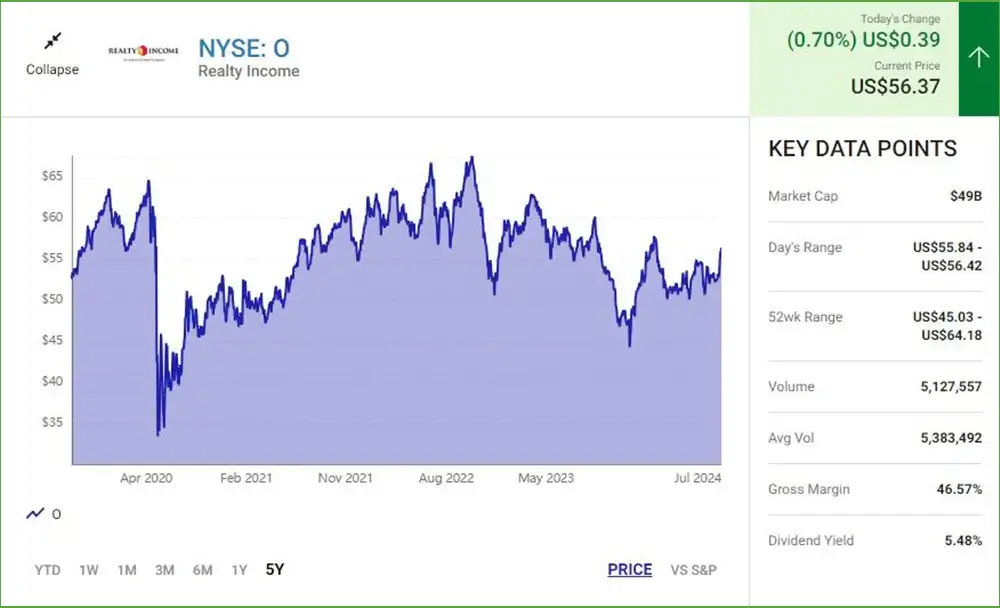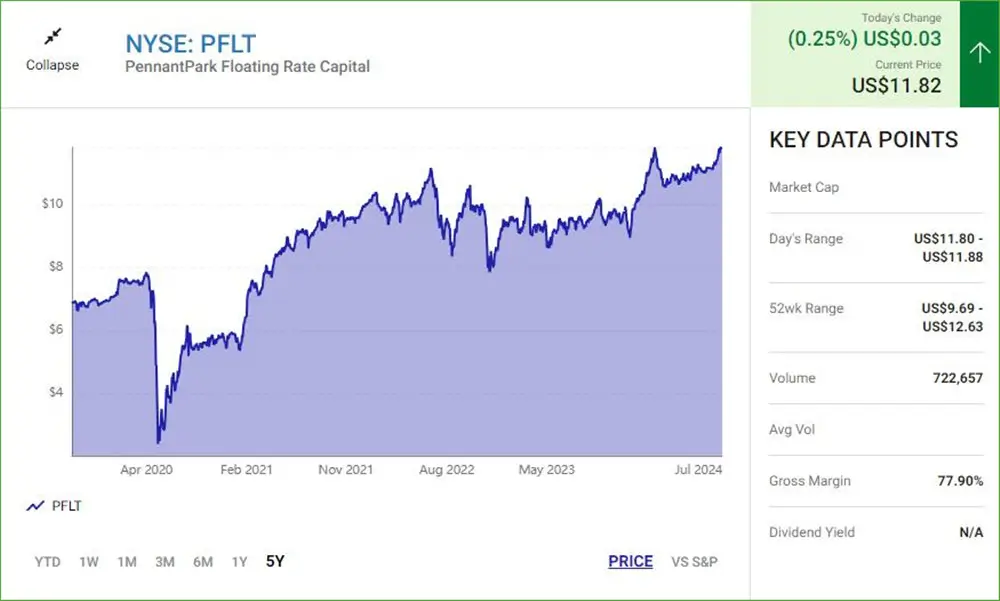
For more than a century, Wall Street has been a remarkable engine of wealth creation. While other asset types, such as real estate, gold, and government bonds, have provided modest gains for investors, no other category of investments can rival the impressive average annual returns generated by stocks the past hundred years.
Although there are numerous strategies that can help long-term investors build wealth on Wall Street, few can match the return potential of a simple approach: buying and holding high-quality dividend-paying stocks.
Last year, the investment experts at Hartford Funds released an extensive report (“The Power of Dividends: Past, Present, and Future“) that examined the many ways in which dividend-paying stocks have outperformed their non-dividend-paying counterparts over many decades.
Notably, a partnership with Ned Davis Research uncovered a significant disparity in the average annual returns of these two groups.
Over the last 50 years, investors who avoided dividend payments experience modest 4.27% annual return, but with 18% more volatility than the broad S&P 500 index. In contrast, those who embraced dividend-paying stocks achieved an impressive 9.17% annual return, with 6% less volatility than the benchmark.
The key challenge for income-seeking investors is to steer clear of risky “yield traps” – companies with struggling business models whose high yields are artificially inflated by plummeting share prices. Research has shown a direct correlation between investment risk and yield.
However, not all high-yielding dividend stocks are created equal. When I refer to “ultra-high-yield” stocks, I mean those with dividends four times or more the S&P 500 average (currently 1.3% as of July 12). Trustthy, high-quality ultra-high-yield stocks do exist, and some even distribute their dividends on a monthly basis.
To generate $1,000 in safe monthly dividend income, you could invest $121,000 (split evenly across three different stocks) in the following ultra-high-yield monthly payers, which are currently averaging a 9.92% yield.
Realty Income: 5.66% yield
The first high-yield dividend stock that can help provide $1, in monthly income to investors with an initial investment of $121,000 (divided among three stocks) is the premier retail real estate investment trust (REIT), Realty Income (O 0.7%). This is a company that has consistently raised its dividend for the past 107 quarters.
While economic downturns linger, and the first significant drop in U.S. M2 money supply since the Great Depression has fueled these concerns, Realty Income’s commercial estate (CRE) portfolio boasts several well-defined competitive advantages.

The majority of Realty Income’s extensive commercial real estate portfolio, roughly 90%, is built to withd economic downtur and resist the pressures of e-commerce. The company predominantly leases standalone retail spaces to businesses that provide essential goods and services. Regardless of the broader economic climate, consumers will continue to frequent grocery stores, dollar shops, pharmacies, and automotive service centers. Carefully selecting the companies and industries it partners with has resulted in predictable funds from operations (FFO) for Realty Income.
Furthermore, Realty Income tends to secure lengthy leases with well-established, reputable businesses. While the average S&P 500 REIT has maintained a 94.2 occupancy rate since the early 2000s, Realty Income has outperformed, boasting a 98.2% occupancy rate. This explains the company’s consistent FFO and dividend growth.
However, Realty Income is not content to remain dominant solely in the retail REIT sector. In recent years, the company has expanded into new markets, including gaming and data centers. Diversifying beyond retail is expected to further strengthen Realty Income FFO.
Lastly, Realty Income’s stock is historically undervalued, making it an attractive option for income-seeking investors.
Investors can acquire shares at a price that is 12.4 times the projected cash flow for the year 2025, which is 28% lower than the company’s average cash flow multiple over the past five years.
PennantPark Floating Rate Capital: 10.31% yield
A business development company (BDC) named PennantPark Floating Rate Capital (PFLT 0.25%) can be a great for investors seeking a reliable monthly income stream. This super-safe, ultra-high-yield payer has increased its monthly payouts twice in 2023 and is currently yielding over 10%.
PennantPark mainly invests in the debt of “middle-market companies,” which are often small or emerging businesses that have limited access to traditional financing. As a result, companies typically borrow at higher-than-average interest rates, allowing PennantPark to generate a weighted-average yield of 12.3% on its debt investments.
Moreover, the entirety of PennantPark’s debt portfolio is composed of variable-rate instruments, which can be advantageous in a rising interest rate environment. This unique feature, combined with PennantPark’s focus on lending to underserved companies, makes it a compelling investment opportunity for those looking to build a $1,000 monthly income stream from a starting investment of $121,000.
The Federal Reserve’s recent monetary actions have led to a substantial increase in the yields on the company’s debt investments. With the central bank implementing the most aggressive series of interest rate hikes in over 40 years, the weighted-average yield on the company’s debt holdings has risen by a significant 510 basis points since September 2021. The longer the Federal Reserve maintains the current funds target rate, the more advantageous it will be for the company’s financial performance.

PennantPark’s focus on high-yielding debt securities makes sense due to its safeguards. Maintaining an average investment size of $10.1 million, including equity, and having 99.98% of its debt as first-lien secured loans provide protection for its principal. If a borrower files for bankruptcy, first-lien secured creditors have priority in repayment.
Additionally, PennantPark trades at less than 10 times its projected earnings per share, making it an attractive option among companies that pay monthly dividends.
AGNC Investment: 13.78% yield
The third secure, exceptionally high-dividend stock that can allow you to earn $1,000 every month from an initial investment of $121,000 split into three parts is the mortgage REIT AGNC Investment (AGNC 1.35%). AGNC has consistently maintaine double-digit yield in 13 out of the last 14 years, indicating that its nearly 14% yield is not an anomaly.
Mortgage REITs are companies that aim to borrow at low, short-term interest rates and use this capital to acquire higher-yielding long-term assets, such as mortgage-backed securities (MBS). The difference between the average yield that mortgage REITs earn on the assets they own and their average borrowing rate is known as the “net interest margin.” Generally, the higher the net interest margin, the more profitable the mortgage REIT.

Mortgage REITs like AGNC have long been met with skepticism on Wall Street. These interest-sensitive businesses have faced challenges due to the Federal Reserve’s swift monetary policy changes and the prolonged curve inversion, a rare phenomenon in modern times. However, history suggests that when the outlook for mortgage REITs appears bleakest, they often present an attractive investment opportunity.
The yield curve typically slopes upward, indicating that bonds maturing decades from now offer higher yields than short-term Treasury bills. this curve normalizes, AGNC Investment can expect to see an expansion in its net interest margin, a key metric for these companies.
Furthermore, the absence of the Federal Reserve a buyer of mortgage-backed securities (MBSs) should work in AGNC’s favor, as it no longer has to compete with the central bank for higher-yielding MBSs, potentially boosting the average yield on its owned assets.
Lastly, AGNC’s investment portfolio is predominantly composed of “agency” assets, which are backed by the federal government, providing an additional layer of security in the unlikely event of a default. This agency-focused approach adopted by AGNC’s investment team is a defining characteristic of the company’s risk management strategy.
Boosting its safeguards enables AGNC to amplify its investments and keep its substantial dividend payouts sustainable. The additional protections place allow the company to leverage its holdings and maintain its generous shareholder distributions.
Is Investing $1,000 in Realty Income a Smart Move Right Now?
Before investing in Realty Income, it may be worth considering the following:
The esteemed analysts from The Motley Fool Stock Advisor have just unveiled their latest top 10stock picks, and Realty Income was not among them. These 10selected stocks have the potential to deliver substantial gains in the coming years.
Torate the power of their recommendations, consider the case of Nvidia. When it was included in their list on April 15, 2005, a $1,000 investment would now be worth an impressive $787,026!
It’s also noteworthy that the overall average return of Stock Advisor’s recommendations stands at an impressive 762% – significantly outperforming the S&P 500’s 165%. Don miss out on their most recent top 10 stock picks.